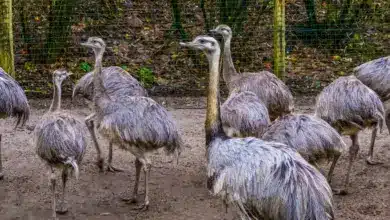Wildlife Photography from Vehicles
`by Ron Toel
Wildlife Photography from Vehicles has become to be a great advantage as a mobile blind. For most animals, a vehicle is less of a threat than a human on foot. A vehicle may be noisy, but it has never shot one of its kind. An animal will become accustomed to a vehicle because they see them every day and as stated the vehicle has never hurt them.
This was true when I was in Africa. In the wildlife sanctuaries, touring and photographing are done exclusively by vehicle. It is amazing how close one can get to the wildlife with these vehicles. There however is a downside…….One is supposed to stay on the roads. This often leads to quite restricted views.
A vehicle appears least threatening to wildlife when it is stationary. I have found that starting and stopping to get a better view agitates an animal, but they then tolerate it or take it to flight.
I usually drive slowly and if I see something, I drive past and get things (camera) situated and then turn around and approach very slowly, stop at a good spot, and shut off the engine (this is a must to avoid vibrations). In the wildlife reserves of Africa, these precautions were unnecessary.
In Africa, never leave the vehicle. First, it is against the rules of the reserve and second one never knows what is lurking. A couple of people wanted a potty break and about the time they were undoing their pants, two cape buffalo came charging. As soon as the people stepped from the vehicle they were considered a threat.
The window ledge is a good sturdy support for even the longest lens. Wayne uses a biiigg old pillow as a support and I use a Kirk window mount. Both work well for each of our needs…..it depends upon what one becomes accustomed to. Move around inside the vehicle as little as possible (It works to have something over the window behind you so you are not a moving silhouette for the animal to watch.) and I repeat, turn off the engine.
When Wayne and I travel together, we have an unwritten rule that whoever’s side the animal is on gets the first shot. After several shots, the other has the opportunity to open the door and shoot across the top of the vehicle. Yes, there are times when the initial shots were the only ones captured, and that is what keeps his portfolio different from mine. :>)
Ideally, the vehicle should be rugged and have a high framework for a high clearance. Most reserves have no paved roads or back roads that serve as fire trails and are not maintained, and one wants to be safe while one drives them. The high framework also allows one to see over tall shrubs and offer a better view.
Here in the States, one can drive and stop and start and get away with seldom leaving the vehicle. Over half of my inventory was taken from within a vehicle. My best images were taken from outside the vehicle, because of the lack of restrictions. Work out your system but get out there and shoot.
Other Articles by Ron Toel:
Choosing the Right Camera … Skyscapes … Landscapes with Animals … Abstract Photography … Close-up Photography … Natural Frames … Nature / Wildlife Photography … Taking Photos at Zoos … Desert Photography … Photography at Game Farms … Grassland Photograph … Mountain Photography … Wetland Photography … Woodland Photography … The Beauty of Snow and Ice … Geothermal Photography … Stalking Your Targets … Nature’s Calendar … The Color of Light … Twilight Photography … EtiquetteIdeas to Enhance Watching Wildlife … Reasons for Attending a Workshop … Keeping Your Awareness
Unrelated to Photography: Alligators … Elephant Seals … Ruby-throated Hummingbirds … Wood Storks


